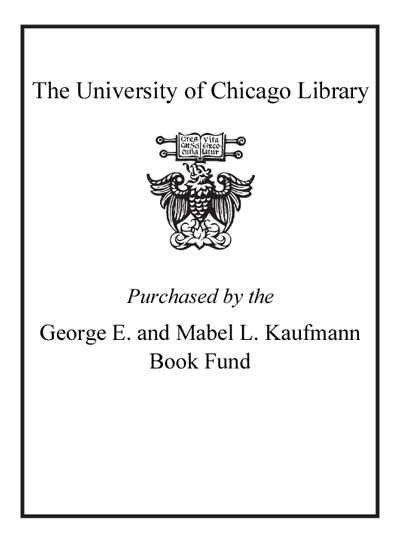Analysis of evolutionary processes : the adaptive dynamics approach and its applications /
Saved in:
| Author / Creator: | Dercole, Fabio. |
|---|---|
| Imprint: | Princeton : Princeton University Press, c2008. |
| Description: | xv, 333 p. : ill. ; 24 cm. |
| Language: | English |
| Series: | Princeton series in theoretical and computational biology Princeton series in theoretical and computational biology. |
| Subject: | |
| Format: | Print Book |
| URL for this record: | http://pi.lib.uchicago.edu/1001/cat/bib/6828778 |
Table of Contents:
- Preface
- Chapter 1. Introduction to Evolutionary Processes
- 1.1. Origins of Evolutionary Theory
- 1.2. Genotypes and Phenotypes
- 1.3. Mutations
- 1.4. Selection
- 1.5. Evolution
- 1.6. The Red Queen Hypothesis
- 1.7. The Emergence of Diversity
- 1.8. Evolutionary Extinction
- 1.9. Examples
- Chapter 2. Modeling Approaches
- 2.1. Overview
- 2.2. Population Genetics
- 2.3. Individual-based Evolutionary Models
- 2.4. Quantitative Genetics
- 2.5. Evolutionary Game Theory
- 2.6. Replicator Dynamics
- 2.7. Fitness Landscapes
- 2.8. Adaptive Dynamics
- 2.9. A Comparative Analysis
- Chapter 3. The Canonical Equation of Adaptive Dynamics
- 3.1. The Evolving Community
- 3.2. The Resident-Mutant Model
- 3.3. The Example of Resource-Consumer Communities
- 3.4. Does Invasion Imply Substitution?
- 3.5. The AD Canonical Equation
- 3.6. Evolutionary State Portraits
- 3.7. Evolutionary Branching
- 3.8. The Role of Bifurcation Analysis
- 3.9. What Should We Expect from the AD Canonical Equation
- Chapter 4. Evolutionary Branching and the Origin of Diversity
- 4.1. Introduction
- 4.2. A Market Model and Its AD Canonical Equation
- 4.3. A Simple Example of Technological Branching
- 4.4. Discussion and Conclusions
- Chapter 5. Multiple Attractors and Cyclic Evolutionary Regimes
- 5.1. Introduction
- 5.2. A Model of Resource-Consumer Coevolution
- 5.3. The Catalog of Evolutionary Scenarios
- 5.4. Discussion and Conclusions
- Chapter 6. Catastrophes of Evolutionary Regimes
- 6.1. Introduction
- 6.2. A Model for the Evolution of Cooperation
- 6.3. Catastrophic Disappearance of Evolutionary Attractors
- 6.4. Evolutionary Branching and the Origin of Cheaters
- 6.5. Discussion and Conclusions
- Chapter 7. Branching-Extinction Evolutionary Cycles
- 7.1. Introduction
- 7.2. A Model of Cannibalistic Demographic Interactions
- 7.3. Coevolution of Dwarfs and Giants
- 7.4. The Branching-Extinction Evolutionary Cycle
- 7.5. Discussion and Conclusions
- Chapter 8. Demographic Bistability and Evolutionary Reversals
- 8.1. Introduction
- 8.2. Biological Background
- 8.3. Asymmetric Competition and the Occurrence of Evolutionary Reversals
- 8.4. Slow-Fast Approximation of the AD Canonical Equation
- 8.5. Discussion and Conclusions
- Chapter 9. Slow-Fast Populations Dynamics and Evolutionary Ridges
- 9.1. Introduction
- 9.2. Biological Background
- 9.3. The AD Canonical Equation for General Demographic Attractors
- 9.4. Evolutionary Sliding and Pseudo-equilibria
- 9.5. Results and Discussion
- 9.6. Concluding Remarks
- Chapter 10. The First Example of Evolutionary Chaos
- 10.1. Introduction
- 10.2. A Tritrophic Food Chain Model and Its AD Canonical Equation
- 10.3. The Chaotic Evolutionary Attractor
- 10.4. Feigenbaum Cascade of Period-doubling Bifurcations
- 10.5. Discussion and Conclusions
- Appendix A. Second-order Dynamical Systems and Their Bifurcations
- A.1. Dynamical Systems and State Portraits
- A.2. Structural Stability
- A.3. Bifurcations as Collisions
- A.4. Local Bifurcations
- A.5. Global Bifurcations
- A.6. Catastrophes, Hysteresis, and Cusp
- A.7. Extinction Bifurcations
- A.8. Numerical Methods and Software Packages
- Appendix B. The Invasion Implies Substitution Theorem
- Appendix C. The Probability of Escaping Accidental Extinction
- Appendix D. The Branching Conditions
- Bibliography
- Index


